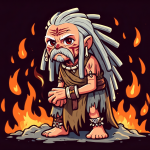The Sick Man of Europe – Economic Woes and Solutions
Sept 28, 2023
Introduction:
Germany, once Europe’s economic powerhouse, faces significant challenges, earning it the title “The Sick Man of Europe.” The COVID-19 pandemic exposed vulnerabilities, impacting growth, competitiveness, and critical industries. Heavy reliance on exports, coupled with disruptions in supply chains, led to production declines and increased unemployment. Transitioning to renewable energy strained the sector and raised electricity prices. Demographic challenges, including an ageing population and workforce, pressure social welfare and pension systems.
Germany needs comprehensive reforms to regain economic strength: investing in innovation and digitalization, supporting entrepreneurship and small businesses, and implementing policies for sustainable growth and job creation. Structural reforms for labour market flexibility and addressing demographic challenges are also crucial.
This article explores Germany’s economic challenges, root causes, and potential solutions, shedding light on the path to economic revitalization and renewed leadership in Europe.”
Germany’s Cure: Reversing ‘Sick Man of Europe’ Status with Nuclear Energy Reboot
The German economy finds itself in a precarious position as the “sick man of Europe,” which could lead to its downfall unless swift action is taken. The urgency is paramount, and the need to reconsider their strategy is dire. The current flawed and poorly conceived green design is unlikely to yield success. For green energy to make a meaningful impact, including nuclear power, is essential. This realization implies that a significant about-face is imminent, particularly in the Western world, regarding their approach to nuclear energy. Developing nations cannot be expected to abandon oil, coal, and other perceived polluting sources solely to appease Western ideals.
In the face of this challenge, Germany has reconsidered its stance on nuclear energy. The country’s energy transition, or “Energiewende,” has been a cornerstone of its environmental policy for the past decade. However, the ambitious plan to phase out nuclear power by 2022 and replace it with renewable sources has faced significant hurdles. The intermittent nature of wind and solar power and the lack of a comprehensive energy storage solution have led to reliability issues and increased dependence on coal-fired power plants.
In response to these challenges, there is a growing consensus among policymakers and industry experts that nuclear power must play a role in Germany’s energy future. The technology offers a reliable, low-carbon source of power that can complement intermittent renewable sources and help the country meet its ambitious climate goals. Furthermore, advancements in nuclear technology, such as small modular reactors, offer safer and more flexible options for power generation.
However, the shift towards nuclear power is not without its challenges. Public opinion in Germany remains primarily opposed to atomic energy, mainly due to concerns about safety and waste disposal. Overcoming these obstacles will require a concerted effort from policymakers, industry, and civil society to educate the public about the benefits and risks of nuclear power and develop robust regulatory frameworks to ensure its safe and responsible use.
While the path to a nuclear energy reboot in Germany is fraught with challenges, it is necessary to reverse the country’s status as the “sick man of Europe” and ensure a sustainable and secure energy future.
Africa’s Pivot: Impact on France’s Nuclear Sector
Another crucial development that’s escaping scrutiny is the growing unrest in Africa. Regardless of one’s preferences, nations like Niger progressively align themselves with Russia and China. Even South Africa is poised to shift its stance sooner than anticipated officially. Notably, Niger, with its high-grade uranium reserves, contributes a substantial 5% to the global supply. The era of Western nations easily accessing cheap raw materials is drawing to a close. Africa is poised to adopt a more stringent stance regarding supplying essential raw materials to Western countries at discounted rates, particularly considering their perspective of the West as colonizers. Interestingly, Russia and China do not evoke the same perception in their eyes. With this in mind, France’s nuclear sector is on the verge of encountering significant challenges as its access to ultra-cheap Uranium is nearing its end.
This shift in Africa’s geopolitical alignment could have profound implications for the global nuclear sector. France mainly relies heavily on African uranium for its extensive nuclear power program. As African nations pivot towards Russia and China, France may find its access to these critical resources increasingly constrained. This could lead to higher costs for France’s nuclear sector and potentially disrupt the country’s energy supply.
Moreover, the changing dynamics in Africa could also impact the global uranium market. If African nations start to demand higher prices for their uranium, it could increase global uranium prices and make nuclear power more expensive worldwide. This could slow the global transition to low-carbon energy sources and hinder efforts to combat climate change.
However, to secure their energy future. This could include investing in renewable energy, improving energy efficiency, and developing new, more sustainable ways to extract and use uranium.
The Dark Side of Power: Wealth Amidst Global Lockdowns
We are well aware of the adage that power tends to corrupt, and it’s evident that absolute power corrupts without restraint. The prominent figures in society have unequivocally demonstrated their ability to control every facet of existence. Through the COVID lockdown, they effectively brought the entire world to a halt while concurrently increasing their wealth fivefold. Our calculations, albeit preliminary, suggest that certain families might now possess a staggering quadrillion dollars—a concept that might sound like science fiction, but consider how much wealth they have acquired as their manipulation and influence over markets date back even before the Great Depression.
The pandemic has highlighted the stark disparities in wealth and power in our global society. The world’s wealthiest individuals have seen their fortunes grow exponentially during this period, while most have faced economic hardship. This concentration of wealth and power in the hands of a few has significant implications for democracy, social stability, and economic sustainability.
The influence of these wealthy individuals extends beyond the economic sphere. They can shape public policy, influence political discourse, and even determine the course of technological and societal development. This has led to a growing concern about the ‘democratic deficit’ – a situation where a small, unaccountable elite makes the decisions that affect the majority.
Moreover, the accumulation of wealth by these individuals often involves practices that exacerbate social and economic inequalities. For instance, tax avoidance strategies and labour exploitation are shared among the super-rich. These practices deprive governments of much-needed revenue and contribute to wage stagnation and job insecurity among the working class.
In conclusion, the COVID-19 pandemic has exposed the dark side of power and wealth in our society. It has underscored the urgent need for reforms to address wealth inequality, enhance democratic accountability, and promote social justice. As we navigate the post-pandemic world, these issues must be at the forefront of our collective consciousness.
Unravelling the ‘Sick Man of Europe’: Green Energy, Manipulation, and the AI Energy Appetite
Nonetheless, this is a crucial subject that does not take centre stage in today’s discussion. The central theme of our conference focuses on contemplating the following notion: What if the creation of the green energy narrative was orchestrated deliberately to engender a substantial deficit within the energy markets? How could such a scenario be engineered? One approach could involve removing nuclear energy from the equation of green energy, followed by using mass psychological techniques to manipulate public perception. This manipulation could be achieved effortlessly through platforms like social media, leveraging the influence of celebrities, and targeting individuals with limited critical thinking capacity(90% of today’s populace). In this manner, green energy would be promoted, while nuclear power would be depicted as tainted. Even natural gas, once deemed eco-friendly, has now been tarnished. With this foundation established, a pivotal framework is set in motion.
Now, there’s a need to advocate for something that consumes energy at an insatiable rate, and behold, AI fits the bill. The energy consumption of AI data centres is genuinely staggering. OpenAI alone expends upwards of $700,000 per day on this front. Numerous other data centres match or even exceed this expenditure, and the count of these colossal centres is set to expand. However, the power infrastructure isn’t keeping pace with this voracious demand.
Nuclear Energy’s Swift Solution Amidst Energy Transition: The Resurgence of ‘Trash to Treasure
The quickest solution to address the energy gap comes in the form of nuclear energy. Surprisingly, during this transition, previously overlooked ideas will significantly transform, ascending to a status akin to precious gold. Formerly labelled as sources of pollution—think natural gas, oil, and coal—these entities will undergo a revival. This orchestrated resurgence will be spearheaded by marketing campaigns touting new technologies that transform trash into treasure. Notably, many of these technologies existed decades ago. The backing of celebrities and manipulation tactics will be harnessed to foster public acceptance. Given the challenges many individuals face even when dealing with basic algebra equations, significant resistance shouldn’t be expected.
In a sudden shift, the scope of the green umbrella window will broaden. Yet, I digress. The central emphasis here circles back to the nuclear sector, intricately interwoven with the uranium sector. Introducing an additional layer of complexity to the story, a strategic manoeuvre comes into play: initiating a conflict with Russia, a notable source of Uranium. However, it’s crucial to highlight that this war with Russia wasn’t triggered for the sake of democracy; it was orchestrated to further financial gains. The driving force behind these actions is fundamentally rooted in the pursuit of wealth.
Unmasking the Puppeteers: Controlling Wealth, Shaping Destinies, and the ‘Sick Man of Europe'”
Armed with considerable financial assets, those who wield control (the elusive, shadowy figures—distinct from prominent figures like Bill Gates, Warren Buffett, and Elon Musk, who are nothing but peons in comparison) possess the means to deploy bullying strategies and inflict ruin upon any barriers obstructing their trajectory.
Recalling the closure of Germany’s oldest metallurgical plant, a historical establishment that had persevered through countless wars for over 600 years, is crucial. This closure stemmed from the energy crisis. In the process, Germany is transformed from being a European powerhouse to moving into the dog house.
In Germany, the oldest metallurgical enterprise in Europe, over 600 years old, the Eisenwerk Erla plant in Saxony, went bankrupt, reports the Rg.ru website. The reason is the consequences of the economic crisis caused by the coronavirus pandemic and rising energy prices. turkmenportal.com
The Data Avalanche: A Tripled Challenge with AI and an Investment Update on the Horizon
The sheer amount of unnecessary and irrelevant data available is astonishing, and this amount has tripled, with the possibility of growing even more due to AI-generated content. This makes sorting through this data to find valuable insights take even longer.
You can expect an update with many new plays to be sent out within the next 24 hours, if not sooner. We’re almost finished with this update, about 90% done. Our main challenge right now is to narrow down a list of 10 potential investment opportunities to a final selection of 2 or 3. This task isn’t straightforward. If we don’t take this step, the upcoming issue will include more than 16 new investment opportunities, which is too much.
The explosion of data, particularly with the advent of AI, presents both a challenge and an opportunity for investors. On one hand, the sheer volume of data can be overwhelming and time-consuming to sift through. On the other hand, this wealth of information can provide valuable insights that can inform investment decisions.
AI can play a crucial role in managing this data avalanche. Advanced algorithms can analyze vast amounts of data quickly and accurately, identifying patterns and trends that would be impossible for humans to detect. This can help investors identify promising investment opportunities and make more informed decisions.
However, the use of AI also raises important ethical and regulatory issues. There are concerns about data privacy and security, as well as the potential for AI to be used in unfair or discriminatory ways. It’s essential for investors to be aware of these issues and to consider them in their investment decisions.
Regarding the investment update, it’s crucial to balance providing a wide range of investment opportunities and not overwhelming investors with too much information. Narrowing down the list of potential investments to a select few can help ensure that investors can evaluate each option and make informed decisions thoroughly.
In conclusion, while the data avalanche presents challenges, it also offers exciting opportunities for investors. With the right tools and strategies, investors can navigate this complex landscape and find valuable investment opportunities.













